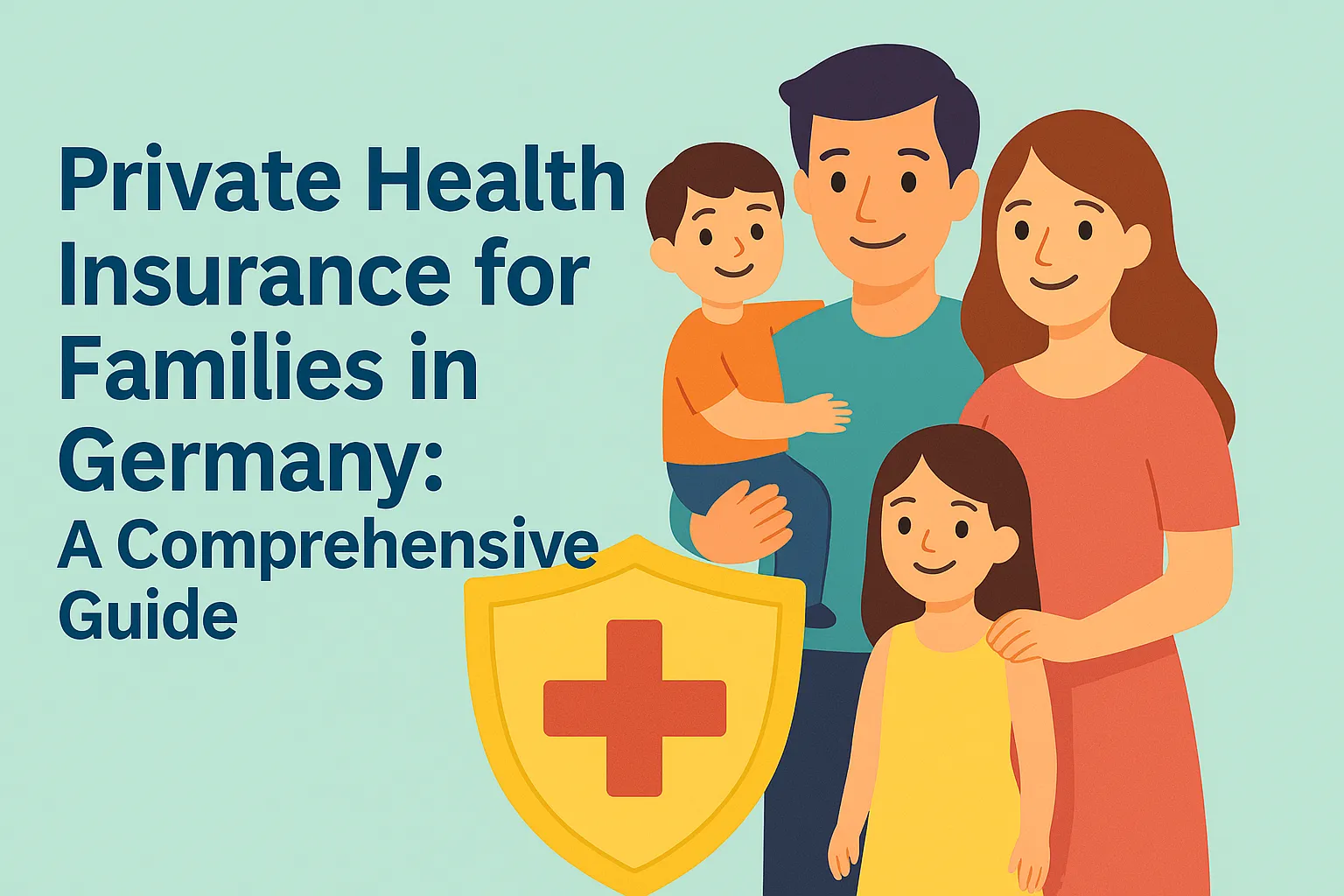Private Health Insurance for Families in Germany – A Complete Guide

Navigating the German health insurance system as a family can be confusing — especially when one parent is privately insured and the other isn't, or when children come into the picture. This guide explains everything expat families need to know about using private health insurance (PKV) in Germany: from eligibility and coverage options to employer contributions, mixed insurance models, and real-world scenarios.
1. GKV vs. PKV for Families – The Basics
Germany has a dual health insurance system: public statutory insurance (GKV) and private insurance (PKV). The implications of this choice are particularly important for families because the two systems treat spouses and children very differently.
Public (GKV):
- Offers free family insurance for children and non-earning spouses under certain conditions.
- Contributions are income-based and increase with higher earnings.
- Benefits are standardized across all public providers.
Private (PKV):
- Each family member requires an individual contract.
- Premiums depend on age, health, and chosen benefits — not income.
- Offers access to superior services, private clinics, and faster treatment.
In households where the main earner has a high income, PKV can be more cost-effective and beneficial, despite requiring separate policies for each family member.
2. Who Must Insure the Children? Married vs. Unmarried Parents
A frequent source of confusion is who must insure the children and whether they can be added to a public family policy. The answer depends on:
- Marital status of the parents
- Which parent earns more
- Whether the higher earner is in PKV or GKV
- The annual income in relation to the Jahresarbeitsentgeltgrenze (JAEG), which is 73,800€ in 2025
Key rules:
- If both parents are in GKV, children are always eligible for free family coverage.
- If one parent is in PKV and earns more and the parents are married, the child must be privately insured.
- If parents are not married, each parent insures their child independently depending on custody and residence.
- If the PKV-insured parent earns less than the GKV parent or is not over the JAEG, the child can usually remain in GKV.
Important: There is no automatic right to choose between GKV and PKV for your children. It depends on income thresholds and insurance type of the parents. The GKV system is designed to prioritize low- and medium-income households. High-income earners are expected to insure their children privately.
3. PKV for Employees Above the JAEG – With Family
If you’re an employee and your income exceeds the JAEG (73,800€ in 2025), you are eligible to join private health insurance. Once you switch to PKV, you may want to insure your family members as well.
Common scenario:
- You are privately insured.
- Your spouse is on parental leave or not working.
- You have one or more children.
In this case, the children must be privately insured unless the non-working spouse is in GKV and earns more (unlikely). Your employer provides a subsidy, but the setup must be optimized.
4. Employer Contributions for Family Members
The employer subsidy applies not just to your own plan, but also partially to:
- Children insured under PKV
- Non-working spouses (e.g. in parental leave)
The maximum employer contribution in 2025 is:
- 471.32€ for health
- 99.23€ for long-term care
Example: Full-time employee, spouse on leave, one child
By distributing the employer subsidy strategically across all insured family members, the net cost can be reduced significantly.
5. Mixed Insurance Models: One Parent in GKV, One in PKV
This is a common situation for expat families:
- One parent switches to PKV due to salary and eligibility.
- The other parent remains in GKV due to part-time work or public preference.
Key considerations:
- If the PKV parent earns more and is above the JAEG, the children cannot remain in GKV for free.
- The children must then be insured privately.
- The employer of the PKV-insured parent can often contribute to the children's plan.
Mixed systems can work well, but they require coordination — especially when it comes to child coverage, dental care, or care abroad.
6. Benefits of PKV for Children
Children benefit greatly from private coverage:
- Faster access to specialists and treatments
- Free choice of doctors and private pediatricians
- Better coverage for dental, vision, and orthodontics
- Full reimbursement for vaccines and preventive checkups
- Access to alternative treatments and private hospitals
Also important: many insurers offer low premiums for children and guaranteed insurability later in life, especially if covered from birth.
7. Common Misconceptions
- “Children are always free in GKV.” → Only true under strict conditions
- “Private insurance is too expensive for families.” → Depends on setup and employer subsidy
- “Once public, always public.” → Not true – there are entry and return options
- “Children can stay in GKV even if parents are in PKV.” → Not if the PKV parent earns more
- “Private coverage means upfront payments and stress.” → Modern apps and fast reimbursements simplify everything.
8. Summary – When PKV Makes Sense for Families
Private insurance makes sense when:
- You earn over the JAEG
- Your children are not eligible for GKV family coverage
- You value better care and faster access
- You want more transparency and control over long-term costs
Discover the latest tips
View AllJoin hundreds of expats who already made the switch.
Find the plan that truly fits your needs.
